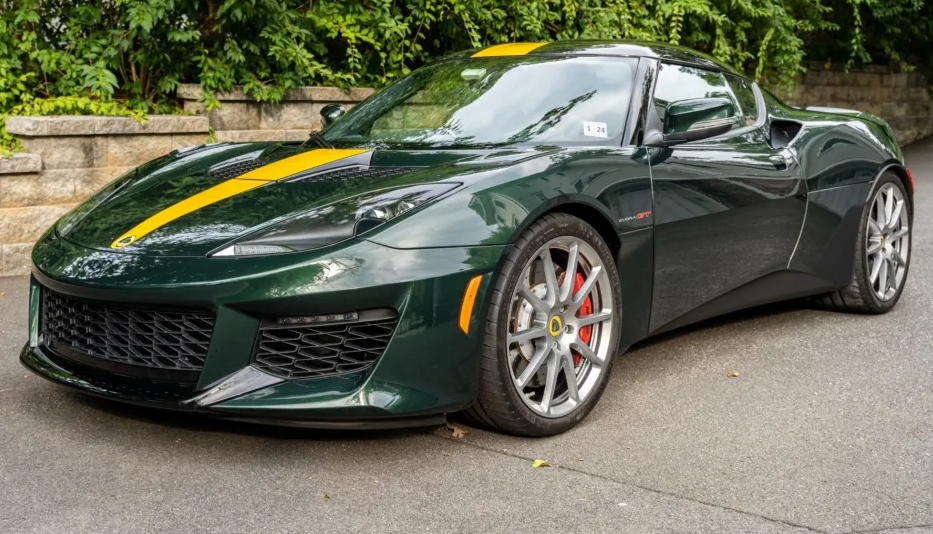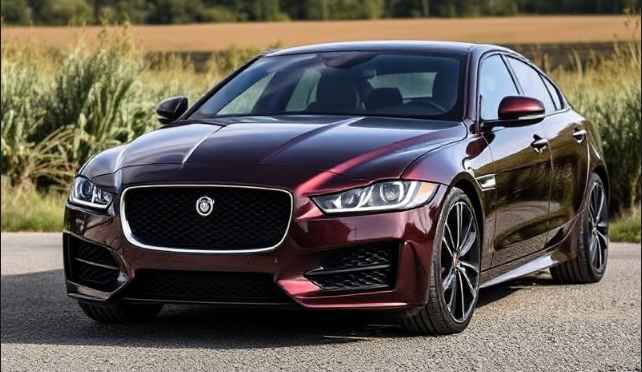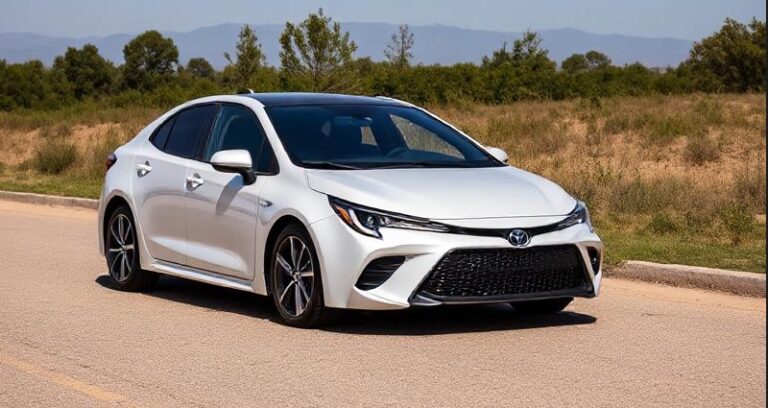The Constant Evolution: Charting the Life of the Lotus Evora
In the storied history of Lotus Cars, a brand synonymous with featherlight chassis and scalpel-sharp handling, the Evora stands as a unique and pivotal chapter. It was not merely another car; it was a statement of intent. Launched into a world dominated by polished German rivals, the Evora was Hethel’s ambitious attempt to fuse its legendary dynamic purity with a level of comfort, practicality, and refinement previously unseen from the British marque. It was the “grown-up” Lotus, a car designed not just for the B-road blast but for the grand tour that followed. Over its remarkable 12-year production run, from 2009 to 2021, the Evora underwent a constant, determined evolution, transforming from a promising contender into a world-class sports car that earned its place among the greats.
The Genesis: Project Eagle (Pre-2009)
The story of the Evora begins with a challenge. In the mid-2000s, Lotus’s lineup consisted of the Elise and its hardcore Exige sibling. While brilliant, they were uncompromising, niche vehicles. The company needed a new flagship, a car that could broaden its appeal and compete directly with the likes of the Porsche Cayman. This initiative, codenamed “Project Eagle,” was the most significant clean-sheet design from Lotus in over a decade.
The core of the car was the innovative “Versatile Vehicle Architecture” (VVA). This modular, lightweight chassis was constructed from bonded and riveted aluminum extrusions, a signature Lotus technique. However, it was designed to be stronger, stiffer, and more adaptable than the Elise platform, capable of underpinning different models. Crucially, it was engineered to accommodate a mid-mounted V6 engine and, for the first time in a modern Lotus, a 2+2 seating configuration, making it a far more practical proposition.
For the heart of the Evora, Lotus wisely turned to Toyota. They selected the 3.5-litre 2GR-FE V6, a powerplant renowned for its smoothness and unwavering reliability. This choice sidestepped the enormous cost of developing a new engine and provided a robust foundation for future performance enhancements.
The First Wave (2009-2014): Laying the Foundation
Lotus Evora (2009-2014)
Unveiled at the 2008 British International Motor Show and hitting showrooms in 2009, the first-generation Evora was a revelation. Its design, penned by Russell Carr, was fluid and exotic, clearly a Lotus but with a more substantial, GT-like presence. Power from the naturally aspirated Toyota V6 was a respectable 276 bhp and 258 lb-ft of torque, sent to the rear wheels via a six-speed manual gearbox.
The critical reception was immediate and overwhelmingly positive, but with caveats. Journalists lauded its sublime chassis dynamics. The hydraulically-assisted steering was hailed as a masterclass in feel and feedback, and the ride quality was astonishingly supple for a car with such cornering prowess. It was, without question, the best-handling car in its class.
However, criticism was directed at the interior, which, despite being a significant step up from the Elise, felt subpar compared to its German rivals. Fit and finish were inconsistent, and the Alpine infotainment system felt like an aftermarket afterthought. Some also felt the 276 bhp engine, while adequate, didn’t quite deliver the supercar punch the chassis deserved. In 2010, Lotus introduced the IPS (Intelligent Precision Shift) six-speed automatic gearbox option to broaden its appeal, though purists overwhelmingly favoured the manual.
Lotus Evora S (2010-2014)
Lotus was listening. To answer the call for more power, they introduced the Evora S in 2010. By strapping a Harrop HTV 1320 supercharger to the V6, they unleashed a far more potent 345 bhp and 295 lb-ft of torque. This was the car the Evora was always meant to be. The added urgency transformed the driving experience, finally giving the chassis the straight-line performance it merited. The Evora S came standard with a “Sport Pack” (previously an option), which included a sport mode button that sharpened throttle response, raised the rev limit, and opened a bypass valve in the new sports exhaust for a more aggressive soundtrack. Cross-drilled brakes provided enhanced stopping power. The Evora S was a resounding success, establishing the car as a genuine threat to the Porsche Cayman S.
During this period, several special editions emerged, most notably the Evora GTE Road Car. Born from a racing program, this was a homologation special of staggering aggression. It featured a widened body, extensive use of carbon fibre, and a race-derived engine tuned to produce a mighty 438 bhp, making it the most powerful production Lotus ever at the time. Initially intended as a limited run for the Asian market, its popularity led to a wider, albeit still very limited, release.
The Second Wave (2015-2021): Refined, Re-armed, and Realized
The acquisition of Lotus by Geely in 2017 provided a vital injection of capital and stability, but the Evora’s second major leap forward came just before, under the leadership of then-CEO Jean-Marc Gales. The mandate was simple: address every single weakness of the original car.
Lotus Evora 400 (2015-2020)
The Evora 400, launched in 2015, was a comprehensive overhaul. The name denoted its new power output: 400 bhp, achieved through a new supercharger and an integrated water-to-air chargecooler. This wasn’t just an engine tune; Lotus claimed two-thirds of the car was new.
The exterior was sharpened with an aggressive new front bumper with larger intakes and a redesigned rear featuring a three-element wing and a new diffuser. More importantly, the chassis was re-engineered with narrower and lower sills, making ingress and egress—a major complaint of the original—significantly easier.
The cabin received the most dramatic transformation. A completely new dashboard, higher-quality materials, better switchgear, and a modern touchscreen infotainment system finally gave the Evora an interior that could stand proudly against its competitors. The result was a faster, more aggressive, and vastly more user-friendly machine. The Evora 400 could sprint from 0-60 mph in just 4.1 seconds and on to a top speed of 186 mph, cementing its supercar credentials.
Lotus Evora Sport 410 (2016-2020)
True to the Lotus ethos of “simplify, then add lightness,” the Evora Sport 410 arrived a year later. This was the 400 put on a strict diet. A standard carbon fibre front splitter, roof panel, rear tailgate, and rear diffuser, along with lightweight forged wheels and the removal of non-essential items like armrests and door pockets, shaved an impressive 70kg from the car’s weight. Power was nudged up slightly to 410 bhp. The suspension was re-calibrated with revised geometry and re-valved dampers, making it an even sharper, more focused driver’s car. It was the purist’s choice, a perfect blend of the 400’s usability and a track-focused edge.
Lotus Evora GT430 & GT430 Sport (2017-2020)
In 2017, Lotus unveiled the ultimate expression of the Evora platform: the GT430. This was the Evora unchained, a limited-edition monster designed for maximum performance. Power was boosted to 430 bhp, but the real story was the aerodynamics and weight loss. The GT430 was adorned with exposed-weave carbon fiber components everywhere, including a gargantuan rear wing, that generated up to 250kg of downforce at top speed. With Öhlins dampers, Michelin Pilot Sport Cup 2 tires, and an optional titanium exhaust, it was the most extreme road-going Lotus to date.
For those who desired the power without the extreme aero, Lotus simultaneously offered the GT430 Sport. It featured the same 430 bhp engine but eschewed the large rear wing and aggressive front splitter for a cleaner, sleeker profile. With less drag, its top speed was an eye-watering 196 mph, making it the fastest production Lotus in history.
Lotus Evora GT (2020-2021, North America)
For its final years in the crucial North American market, Lotus streamlined the lineup into a single, definitive model: the Evora GT. It effectively consolidated the best attributes of the Sport 410 and GT430. It used a 416 bhp version of the supercharged V6 and came with much of the carbon fiber componentry as standard. It represented the culmination of a decade of development, offering a brilliant balance of raw performance, aerodynamic grip, and daily usability.
.
THIS could come in handy for your auto garage (and everywhere else!):

.
The End of an Era (2021)
In 2021, Lotus announced that production of the Elise, Exige, and Evora would cease to make way for a new generation of sports cars, beginning with the Emira. The Evora’s twelve-year journey had come to an end. It had successfully bridged two eras of Lotus, carrying the brand from its analogue past into a more refined, modern future.
The Evora’s evolution is a testament to Lotus’s engineering tenacity. It began as a car with a world-beating chassis that was somewhat let down by its powertrain and interior. Through relentless iteration—adding power with the S, comprehensively redesigning with the 400, adding lightness with the Sport 410, and chasing ultimate performance with the GT430—Lotus polished its diamond in the rough until it shone brightly. The Evora proved that Lotus could build a car that delivered an unfiltered, joyous driving experience without demanding the compromises of its predecessors. It was, and remains, a true driver’s car in every sense, a modern classic that rightfully earned its place in the pantheon of great British sports cars.







